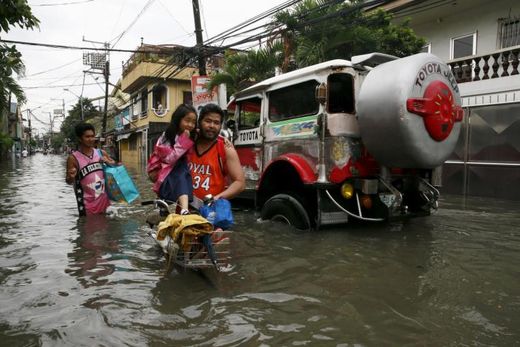
Storm warnings were issued in at least 14 areas of the main Philippine island of Luzon as tropical storm Linfa moved slowly across the north of the Southeast Asian archipelago. It was carrying maximum wind gusts of 100 km per hour (60 mph).
Alexander Pama, executive director of the National Disaster Risk Reduction and Management Council, said the storm would bring heavy rain within a 400-km (250 miles) radius. The storm was named Egay in the Philippines.
"We are grounding all sea travel and fishing operations in the north because we expect sea waves to go as high as 4 meters (13 feet), Pama said.
"We don't want any lose of life or any accidents," he said.
Army units had been placed on standby to evacuate people to temporary shelters if needed, Pama said.
The government was expecting some crop damage in rice-producing areas in northern Luzon. Linfa made landfall in the north of the island on Saturday and was about 135 km (85 miles) southwest of Laoag City in Luzon's far north on Monday.
An average of 20 typhoons pass through the Philippines every year. Haiyan, the strongest typhoon ever to make landfall in the Philippines, killed more than 6,300 people and left 1,000 missing in 2013.



Reader Comments
to our Newsletter